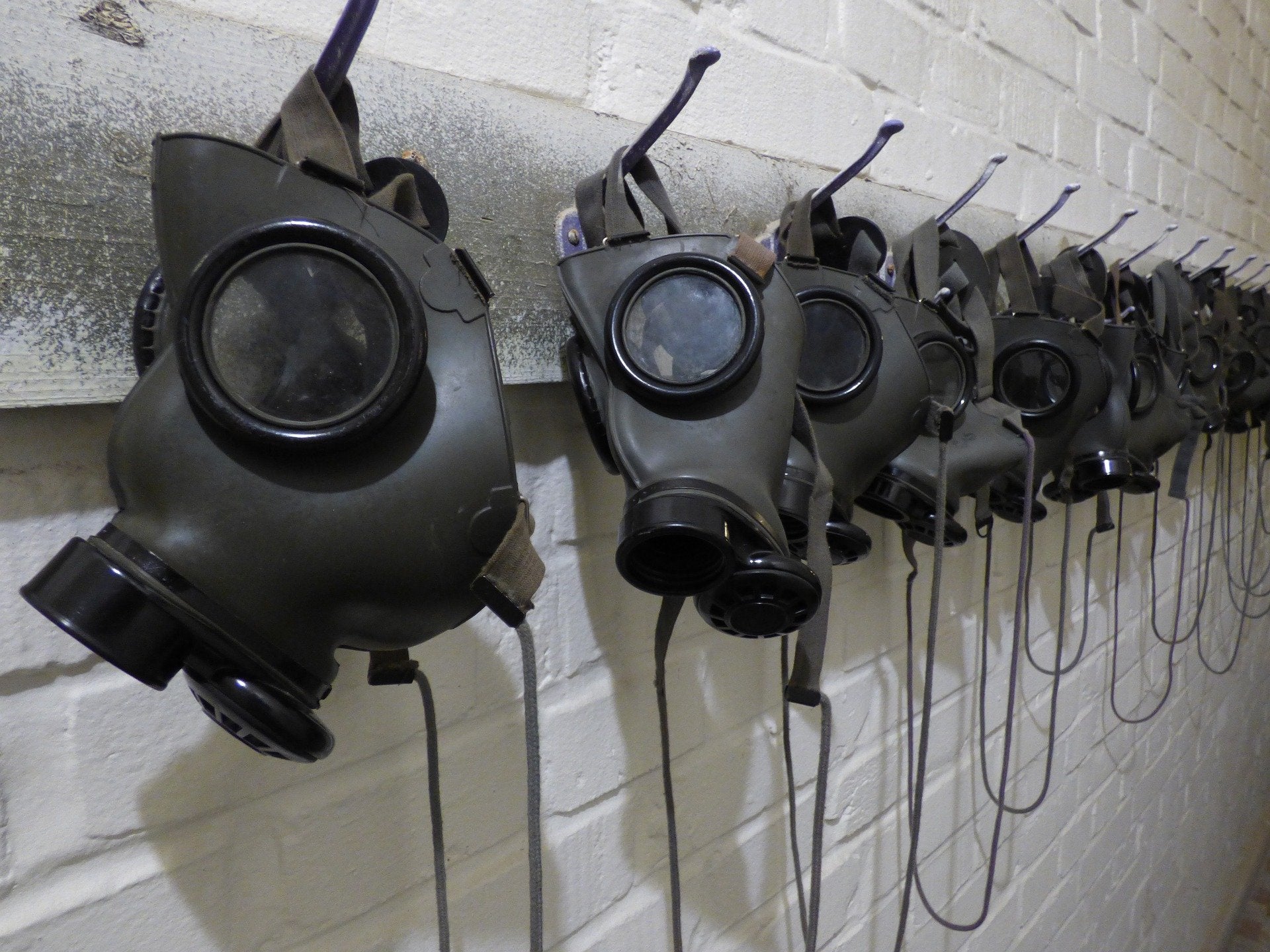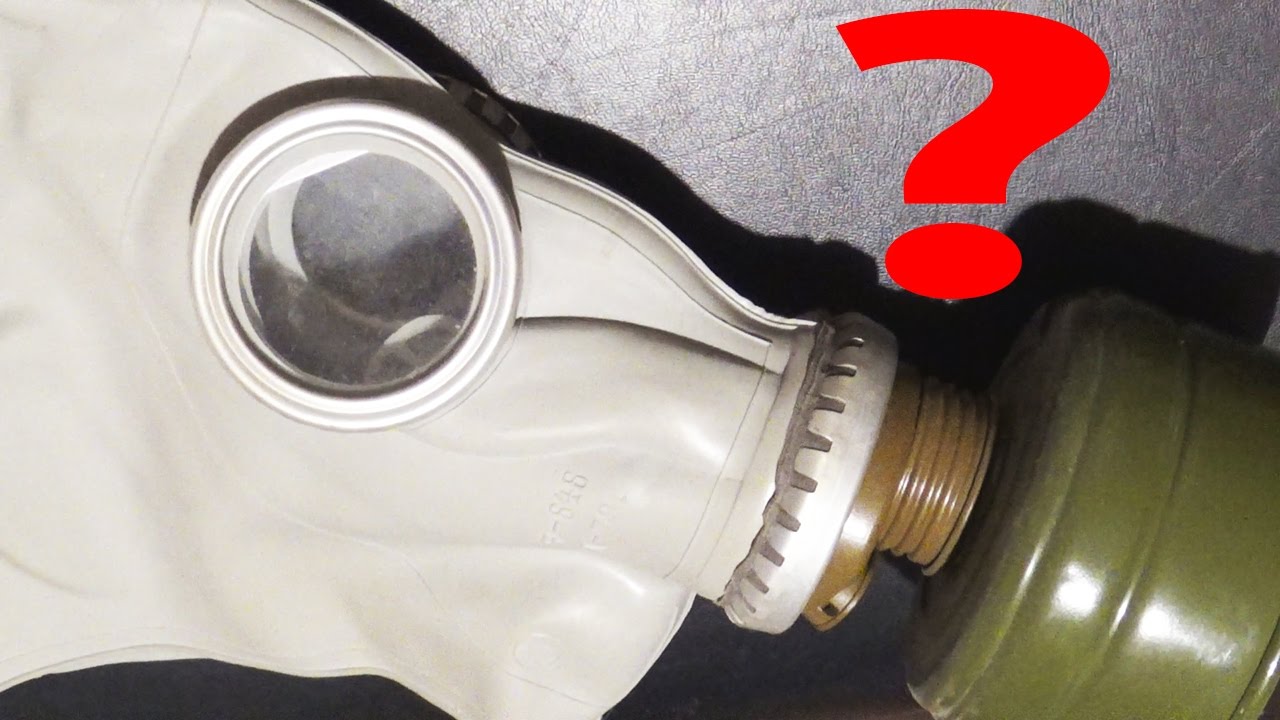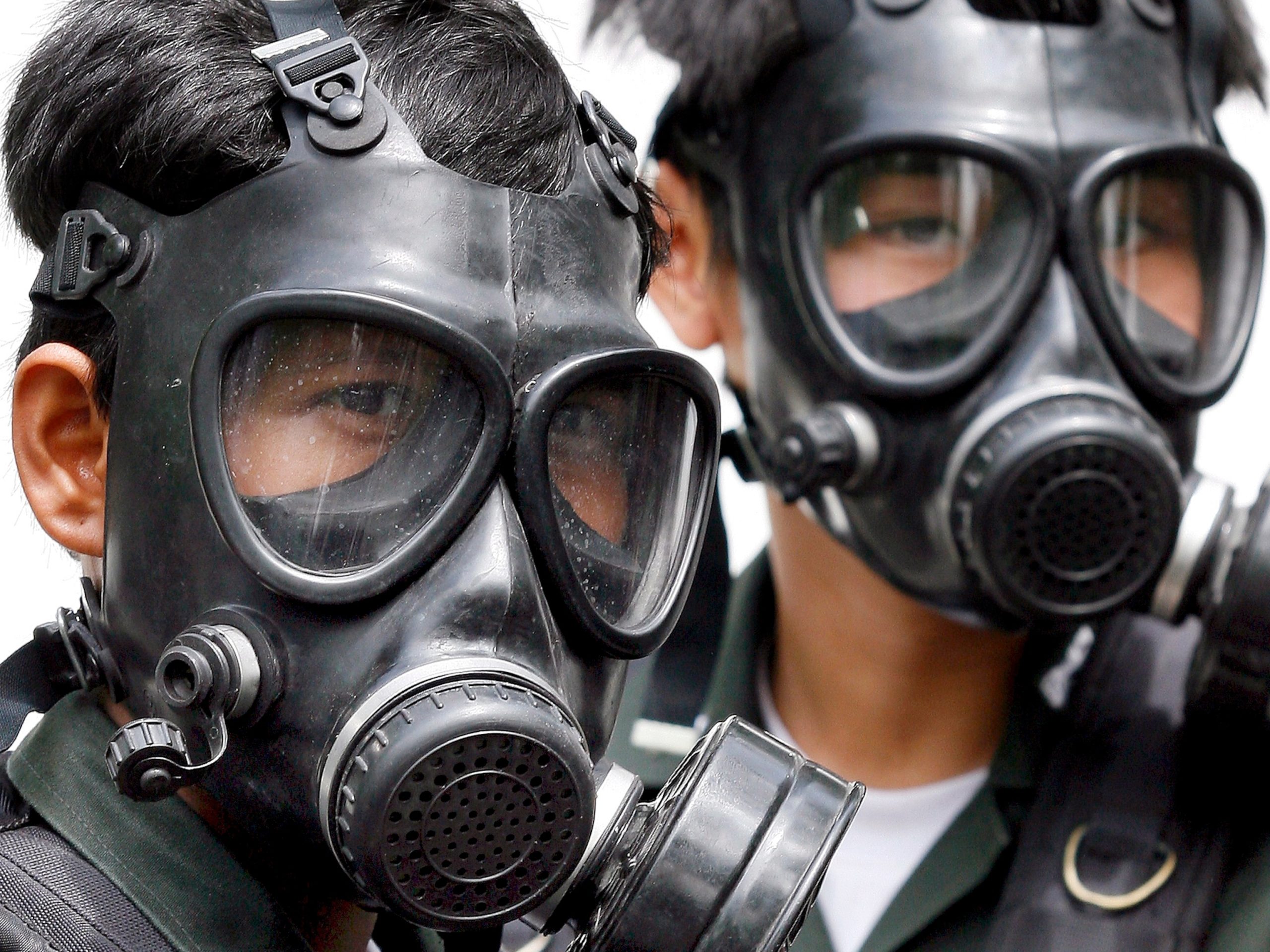How Does a Gas Mask Work? A Deep Dive into Design, Function, and Practical Use
Imagine you’re in a dusty attic, the air thick with particles, or watching a movie where heroes don a mask to escape a cloud of toxic gas. Gas masks might seem like something out of science fiction or history books, but they’re real tools with a fascinating design—and they could save lives. So, how does a gas mask actually work? Let’s break it down step by step, exploring the science, the history, and the practical know-how you won’t find in a quick Google search.
In this guide, we’ll uncover the mechanics behind gas masks, how they’ve evolved, and what makes them effective (or not) in real-world situations. Whether you’re curious about their role in emergencies, how to maintain one, or the latest research shaping their future, you’re in the right place. Let’s dive in!
What Is a Gas Mask, Anyway?
A gas mask is a protective device that covers your face—usually your nose and mouth, sometimes your eyes too—to filter out harmful substances in the air. Think of it as a personal air purifier you wear. It’s designed to shield you from things like toxic gases, smoke, dust, or even biological agents, depending on the model.
Gas masks aren’t just for soldiers or hazmat teams. People use them in wildfires, industrial accidents, or even during volcanic eruptions when ash fills the air. But how do they turn dangerous air into something you can breathe? It all comes down to clever engineering and a bit of chemistry.

The Core Mechanism: How Gas Masks Clean the Air
At its heart, a gas mask works by filtering the air you breathe. It’s not magic—it’s science! Here’s the basic rundown:
- Air Comes In Through a Filter: When you inhale, air gets pulled through a special filter attached to the mask.
- The Filter Traps the Bad Stuff: This filter catches harmful particles, gases, or chemicals, letting only clean air pass through.
- You Breathe Safely: The purified air reaches your lungs, and you exhale through a valve that keeps contaminated air from sneaking back in.
Sounds simple, right? But the real genius is in the filter—and that’s where things get interesting.
Inside the Filter: A Mini Chemistry Lab
Gas mask filters are packed with materials that act like tiny gatekeepers. Here’s what’s usually inside:
- Activated Charcoal: This isn’t the stuff you grill with! Activated charcoal is super porous, like a sponge with millions of tiny holes. It grabs onto gas molecules (a process called adsorption) and traps them so they don’t reach your lungs.
- Particle Filters: These are like fine nets that catch dust, smoke, or germs. They’re rated by how small a particle they can stop—think of it as a coffee filter for the air.
- Chemical Neutralizers: Some filters have special chemicals that react with toxic gases (like chlorine or ammonia) and turn them into harmless substances.
For example, during World War I, soldiers faced mustard gas—a nasty chemical that burned skin and lungs. Early gas masks used soda lime, a mix of chemicals, to neutralize it. Today’s filters are way more advanced, but the idea’s the same: stop the danger before it gets to you.

Types of Gas Masks: Which One Does What?
Not all gas masks are created equal. Depending on what you’re up against, you’ll need the right type. Here’s a quick guide:
- Half-Face Masks: Cover your nose and mouth. Great for dust or mild chemicals, like in a factory or wildfire.
- Full-Face Masks: Protect your eyes too. These are for serious threats, like tear gas or biohazards.
- Powered Air-Purifying Respirators (PAPRs): These use a battery-powered fan to push air through the filter. They’re easier to breathe in and perfect for long-term use, like in hospitals.
Each type has its strengths. A half-face mask won’t help much if a gas stings your eyes, while a PAPR might be overkill for a quick DIY project. Matching the mask to the situation is key.
The Design Details: What Makes a Gas Mask Effective?
A gas mask isn’t just a filter slapped onto your face. Every part plays a role in keeping you safe. Let’s break it down:
1. The Facepiece
This is the rubber or silicone part that seals against your skin. A good seal is everything—if air leaks in around the edges, the filter’s useless. That’s why masks come in sizes and often have adjustable straps.
2. The Filter Canister
This is the “brain” of the mask. It’s usually screwed onto the front or side and can be swapped out when it’s used up. Some masks even let you stack filters for extra protection.
3. The Valves
Inhale valves pull air through the filter, while exhale valves let your breath out without letting bad air back in. Ever wonder why gas masks make that Darth Vader sound? That’s the valves at work!
4. The Lenses (For Full-Face Masks)
Made of tough plastic, these keep your eyes safe and let you see clearly. Some have anti-fog coatings—crucial when you’re sweating or in humid conditions.
A well-designed mask balances comfort, protection, and breathability. Too heavy, and you won’t wear it long. Too flimsy, and it won’t hold up.
How Effective Are Gas Masks, Really?
Here’s the million-dollar question: Can a gas mask save you from anything? The answer is… it depends.
What They’re Great At
- Particles: Smoke, dust, pollen? No problem. Filters rated N95 or higher catch 95% of tiny particles.
- Gases: Many masks handle common toxins like carbon monoxide or chlorine, thanks to activated charcoal.
- Short-Term Use: In a fire or chemical spill, a gas mask can buy you time to escape.
Where They Struggle
- Oxygen Levels: Gas masks don’t make oxygen. If the air’s too thin (like at high altitudes or in a sealed room), you’re out of luck.
- Perfect Fit: A beard or glasses can break the seal, letting bad air sneak in.
- Filter Limits: Filters wear out. If you’re in a toxic cloud too long, they’ll stop working.
A 2023 study from the National Institute for Occupational Safety and Health (NIOSH) found that even top-tier masks lose effectiveness after 6-8 hours of heavy use. That’s why pros carry spares—and why you should know your mask’s limits.
Interactive Quiz: Test Your Gas Mask Smarts!
Think you’ve got the basics down? Take this quick quiz:
- What’s the main job of activated charcoal in a gas mask?
- A) Makes the mask smell nice
- B) Traps gas molecules
- C) Keeps the filter cool
- True or False: A gas mask can protect you if there’s no oxygen in the air.
- A) True
- B) False
- What’s one thing that can ruin a gas mask’s seal?
- A) Wearing earrings
- B) Having a beard
- C) Talking too loud
(Answers: 1-B, 2-B, 3-B. How’d you do?)
A Brief History: How Gas Masks Evolved
Gas masks have a wild backstory. They started as crude tools and turned into high-tech gear. Here’s a quick timeline:
- 1915: World War I kicks off the gas mask era. Chlorine gas hits the battlefield, and soldiers use cotton pads soaked in urine (yep, urine!) to neutralize it. Soon, basic masks with charcoal filters appear.
- 1940s: World War II brings better designs—rubber facepieces, replaceable filters, and eye protection. Civilians get them too, fearing air raids.
- Today: Modern masks use nanotechnology and smart materials. Some even pair with apps to track filter life.
Fun fact: The iconic “elephant trunk” design from early masks wasn’t just for looks—it moved the filter away from your face for easier breathing. History shaped what we use now!

How to Use a Gas Mask: A Step-by-Step Guide
Owning a gas mask is one thing—using it right is another. Here’s how to do it:
Step 1: Check the Fit
- Put the mask on without tightening the straps.
- Cover the filter opening with your hand and inhale. If it sticks to your face, the seal’s good.
- Adjust straps until it’s snug but not painful.
Step 2: Inspect the Filter
- Look for an expiration date—yes, filters go bad!
- Make sure it’s the right type for the threat (e.g., chemical vs. particle).
Step 3: Put It On
- Hold the mask to your face, pull straps over your head, and tighten from bottom to top.
- Breathe normally—panicking makes it harder.
Step 4: Test It
- Pinch the exhale valve and blow. If air escapes around the edges, adjust the fit.
✔️ Pro Tip: Practice in a safe space first. You don’t want to fumble in an emergency.
❌ Don’t: Use a damaged mask or an expired filter. It’s like wearing a broken helmet.
Maintenance 101: Keeping Your Gas Mask Ready
A gas mask isn’t a “set it and forget it” tool. Here’s how to keep it in top shape:
- Clean It: Wipe the facepiece with a damp cloth after use. Avoid harsh chemicals—they can degrade the rubber.
- Store It: Keep it in a cool, dry place, away from sunlight. A sealed bag works great.
- Replace Filters: Check the manual—most last 5-10 years unopened, less once used.
Neglect this, and your mask might fail when you need it most. A 2024 survey of emergency preppers found 30% had expired filters they didn’t know about. Don’t be that person!
Beyond the Basics: 3 Things You Didn’t Know About Gas Masks
Most articles stop at “filters clean the air.” Let’s go deeper with some fresh insights:
1. The Psychology of Wearing One
Ever notice how gas masks look intimidating? That’s no accident. A 2022 study from the University of California found that their design—big lenses, stark colors—can signal danger to others, boosting group survival in crises. But they can also make you feel isolated or anxious. Practice wearing one to get comfy.
2. Nanotechnology’s Role
New filters use nanofibers—threads 1,000 times thinner than a hair. Research from MIT in 2025 shows they trap 99.9% of particles and some gases traditional filters miss. Look for “nano-enhanced” labels if you’re buying modern gear.
3. DIY Risks
Some folks try making gas masks from soda bottles and charcoal. Spoiler: It doesn’t work well. A homemade filter might catch dust but won’t stop gases like carbon monoxide. Stick to certified masks—your lungs will thank you.
Real-World Scenarios: When Do You Need a Gas Mask?
Let’s get practical. Here’s when a gas mask shines—and when it doesn’t:
| Situation | Gas Mask Useful? | Why? |
|---|---|---|
| Wildfire Smoke | ✔️ Yes | Filters out ash and particles, but not low oxygen. |
| Chemical Spill | ✔️ Yes | Works if the filter matches the chemical (check the label!). |
| Volcanic Ash | ✔️ Yes | Great for ash, less so for gases like sulfur dioxide. |
| Tear Gas at a Protest | ✔️ Yes | Full-face masks protect eyes and lungs—half-face won’t cut it. |
| High Altitude | ❌ No | No oxygen supply means no help here. |
Trending on X lately: People near wildfires are asking about gas masks for smoke. The consensus? They help, but only with the right filter and a tight fit.
Interactive Poll: What’s Your Gas Mask Priority?
If you were buying a gas mask, what matters most to you? Vote below and see what others think!
- A) Comfort for long wear
- B) Protection against specific threats
- C) Easy maintenance
- D) Affordable price
(Share your pick in your head—we’ll imagine the results!)

The Future of Gas Masks: What’s Next?
Gas masks aren’t stuck in the past. Here’s what’s cooking:
- Smart Masks: Filters that beep when they’re full, linked to your phone.
- Lighter Materials: New plastics cut weight by 20%, per a 2025 report from the Department of Defense.
- Universal Filters: Research aims for one filter to rule them all—gases, particles, biohazards.
A prototype from xAI’s labs even uses AI to adjust airflow based on your breathing. Sci-fi? Maybe not for long.





No comment